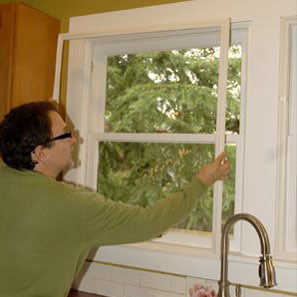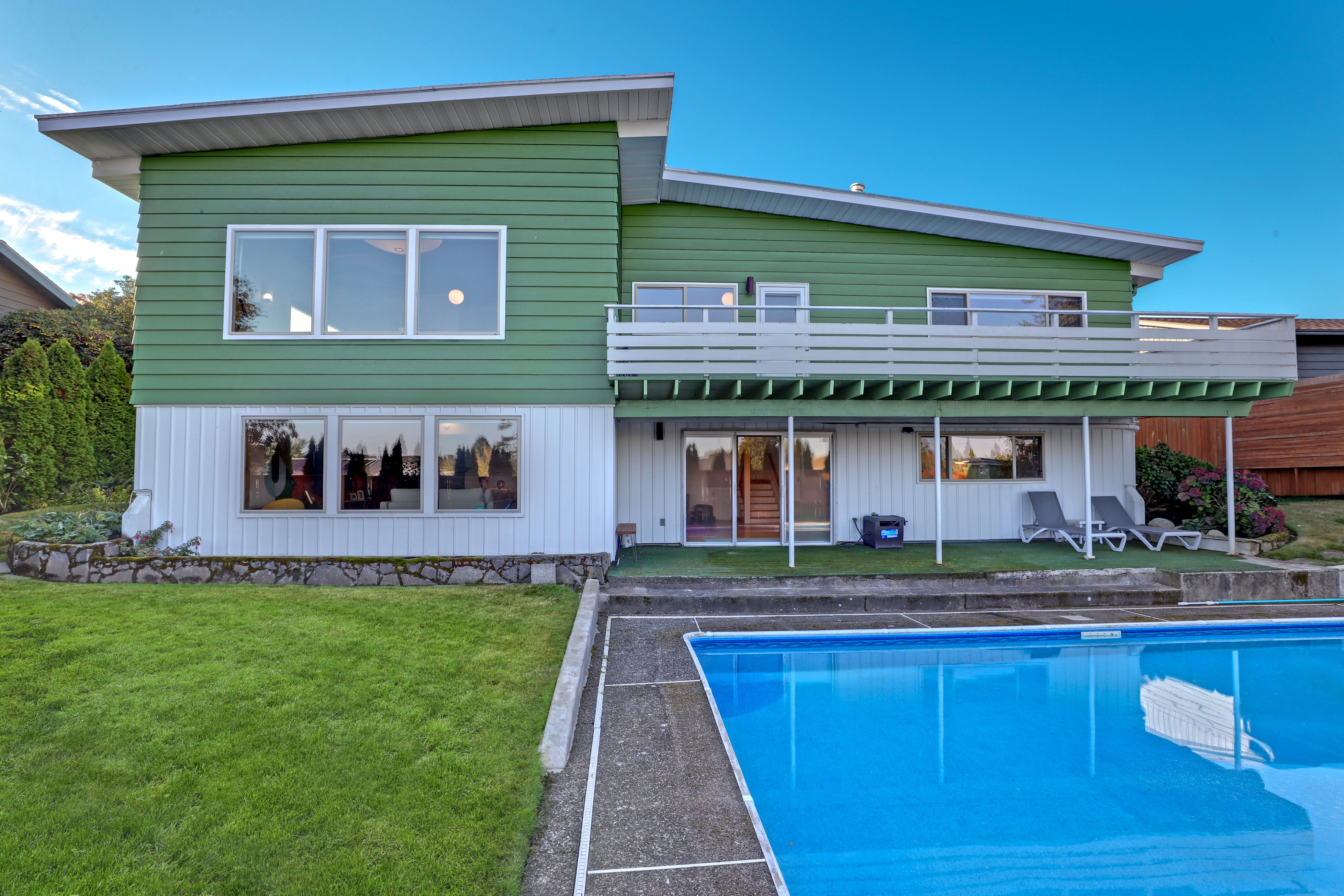Window Warmers

The edges of an Indow Window are made of compressed tubing (patent pending), so the insulating acrylic sheet snaps easily into single-paned windows. The acrylic layer cuts down on energy loss without cutting out the visual charm of old wooden windows.
Much of the charm and beauty of an old house comes from its original windows; they are key to the home’s character, whether it’s a craftsman style bungalow or a mid-century ranch. But we often pay a high price for keeping these old windows, in energy and dollars: on average, about 30% of the energy a house loses is through its windows.
And that’s not a small loss, because 30% of all the energy we as a society use is consumed by our buildings. That’s right: not our cars, but our buildings. After all, even if we drive a gas guzzler on a long daily commute, it’s probably less time than we spend sheltered inside a warm, lighted building.
So, just by living in a house with old, uninsulated windows (as I admittedly do), it’s like I’m still driving a big old 1970s station wagon to work instead of pedaling away on my uber-green cargo bike. Ooops. Not good.
So what to do? Replacing old windows with new, energy-efficient double-paned windows is an answer, but also comes with a high price. New wooden windows tend to be spendy. A typical vinyl window tends to cost less in dollars but more in terms of visual appeal. With each, there’s also the "embodied energy" wasted in ripping out old materials and putting in newly made replacements.
Indow Windows, however, has come up with another alternative. The young North Portland company makes a custom-sized acrylic window insert that fits tightly, and nearly invisibly, over your single-paned energy hog. Sam Pardue is the green-minded, inventive entrepreneur who evidently was frustrated at the options for insulating the charming old windows of his 1906 Portland home. Expensive and/or ugly were what he saw on the market. But he says that one day he was looking at the open door of his refrigerator. (Perhaps he was searching for a snack? He didn’t specify.) The light bulb went off, not in the fridge but in his head: a springy rubbery gasket could seal the edge of a window like the door of a fridge seals its cold interior from the room temperature.
Indow Windows have been on the market for a bit more than a year now, but are already winning awards from sustainable and energy-related institutions. The latest accolade came just this week: a February 13 announcement that they’re finalists in the Edison Awards for innovative products and services. Pardue and company have put in nearly 2000 of the window inserts in the Portland metro area, with Neil Kelly being the major installer.
The Indow Window adds a second, continuous layer over a house’s single-paned window. The acrylic layer is sealed nearly invisibly at the edges of the window frame and creates an air pocket that keeps cold and hot air away from each other. The air pocket dramatically reduces the condensation that usually occurs on such old windows, and thus also lessens the chances of moisture seeping into and rotting away the wood frames.
Another benefit, depending on how much you enjoy the noises of your neighborhood, is that the Indow Window lowers the decibels you’ll hear from cruising hot rods or clanking, beeping recycling trucks. Its a win-win window situation, you might say.
Prices run about $20-$25 per square foot of window (depending on the grade of acrylic used). The cost for a typical 3′ × 4′ window totals about $240, including on-site laser measuring of your window before fabrication of the insert, and initial installation. Since all inserts are custom-made, skewed and crooked windows will be as tightly sealed as any.
Indow Windows
503.284.2260
2267 N Interstate Avenue
Portland OR 97227
For more information call authorized dealer Neil Kelly (phone 503.288.7461).




